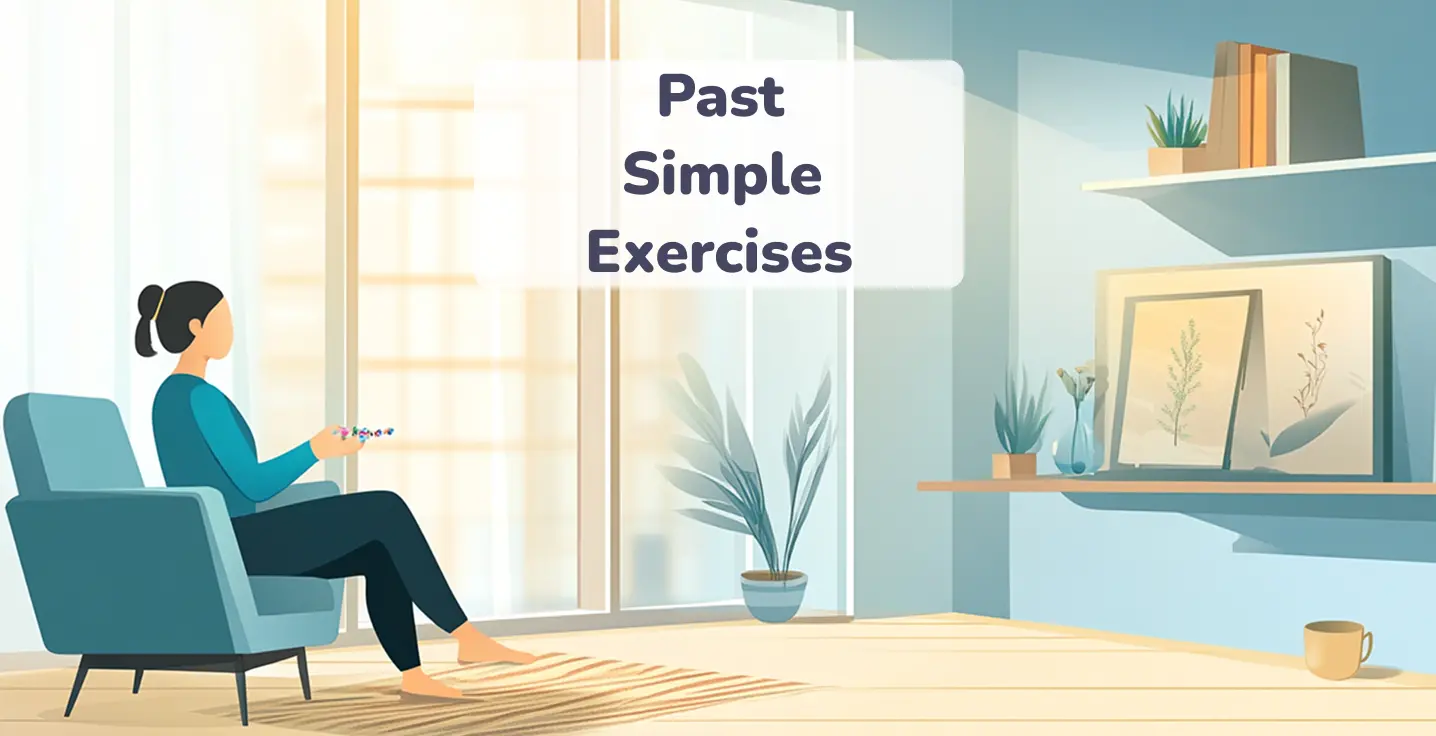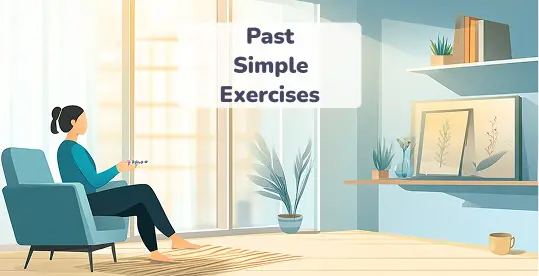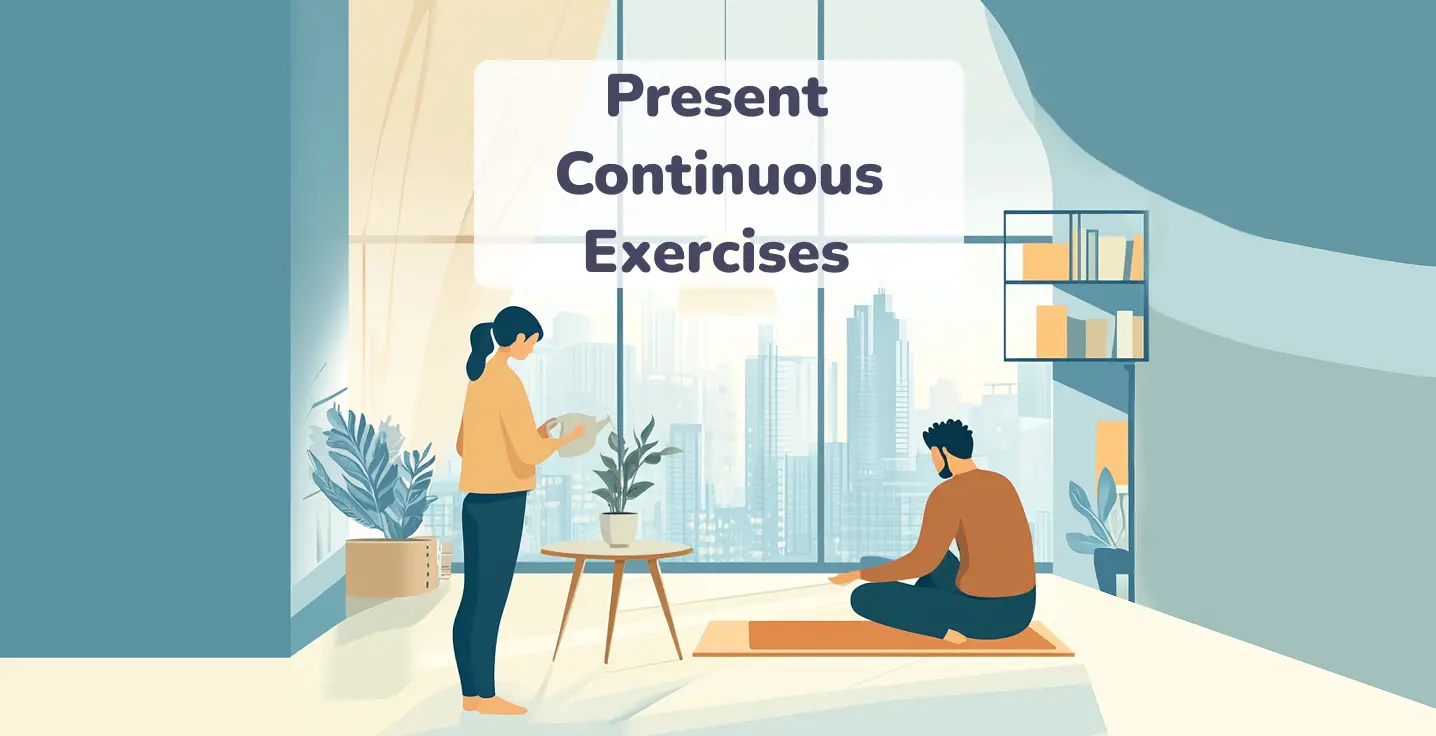Past Simple exercises
What mistakes do learners often make in Past Simple practice?
Even with the best recipe for success, grammar explorers often mix up the ingredients when working with the Past Simple worksheet.
Verb tense error
Using the base form instead of the correct past form is one of the classic mistakes that even native speakers make, and here is the example:
|
Yesterday I go to the park.
|
Yesterday I went to the park.
|
Confusing Past Tense and Present Perfect
Another common mix-up in the Past Simple tense test involves missing the time marker as the point that indicates the correct tense.
|
I have seen him yesterday.
|
I saw him yesterday.
|
Forgetting irregular verbs
This mistake is a typical one as well, because you need to study the irregular verbs and how they are used in this tense.
|
He eated lunch at noon.
|
He ate lunch at noon.
|
Each correction sharpens the sense of how and when to use the past simple naturally.
Simple tips to get ready for a Past Simple test
Past Simple worksheets are the most effective when you want to master your English skills. To complete the activities effectively and with ease, you may need some pro tips we prepared in this section.
Tip 1. Make it a part of your daily routine
You will be fully prepared for a test if you practice with real-world sentences. For example, you can consume your favorite content in English and identify the Past Simple tense in music, videos, and texts
Tip 2. Learn time expressions
To identify this tense in Past Simple tense exercises, pay attention to special markers like yesterday, last night, a week ago, in 2015, and so on. Combine it with the previous step to make the most out of your practice.
Tip 3. Do short exercises
You don’t need to spend hours preparing for a Past Simple quiz. Just 5 minutes will be enough for you to stay motivated. You can use bite-sized drills from KotoEnglish.
How to make Past Simple activities part of your daily routine?
To stay engaged in your learning process, you can use some practices that make studying English fun. You still need to put in some effort, but mastering English will become a habit.
- Journaling. You may hear about gratitude journaling and other types, so you can choose the one that suits you best. Start with what you did yesterday, keep it simple, pay attention to the grammar you learned
- Use flashcards. You can make a paper version or download an app and memorize/recall English tenses on the go, while waiting for your coffee, commuting to school or office, and more.
- Review common mistakes. You can find them in this article above and memorize to avoid in the Past Simple online exercises you prepare for. For example, tests with answers will help you identify issues.
- Read instructions. You can take small quizzes and pay attention to the task, as sometimes it can be tricky. Look for keywords like questions, negative sentences, verb base form, and so on.
Why is regular Past Simple practice key to long-term progress?
Consistency makes you an English master. Spending even 5 minutes a day, you will gain knowledge constantly, memorizing grammar better, and improving different aspects of your language, like with Past Simple questions exercises.
Here are some points that will show you why daily drill is efficient:
- You develop automaticity. The more activities you do daily, the easier it will be to complete a test. Learning English daily, you will automatically see time markers and expressions that differentiate Past Simple from other tenses.
- You increase your vocabulary. Grammar is important, but not the only language point, so doing a Past Simple exercise, you will also grow the number of words you know.
- You reinforce sentence structure. It will help you in developing/learning other, more complex tenses that still will have a similar structure for questions, negative and affirmative sentences.
- You become fluent. Doing Past Simple tense exercises with answers on a daily basis, you master the natural flow of the English language and learn how native speakers use it through podcasts, vlogs, interviews, and more.
- You recognize regular and irregular verbs. Moreover, you learn how to operate them, which will also be helpful in advanced levels like B2 and C1.
With a well-built foundation, your learning journey will be easier, so ensure to pay attention to the Simple Past and other tenses and master them to perfection.
Conclusion
After the Simple Past worksheets are over, spend some time going over your responses carefully. Examine the reasons for the difficulty of some sentences and pinpoint the precise places where mistakes were made. You’ll be able to tell which ideas require greater attention as a result.
Also, putting the knowledge acquired into practical situations is another smart move. Write a brief journal post, have a conversation, or use the past simple to explain a recent occurrence. You can solidify your understanding and integrate the tense into your speech by actively using it every day.






